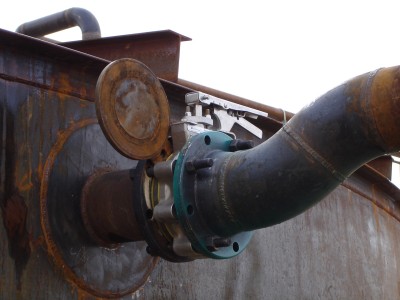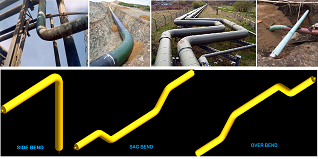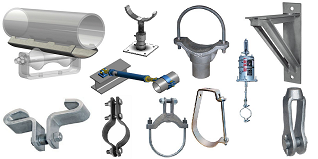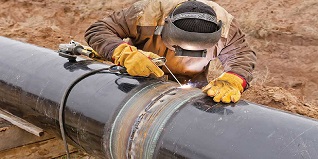In the world of the piping industry, where precision, safety, and efficiency are more important than anything else, the role of the spectacle-blind cannot be overseen. Though it’s design looks very simple, it plays a pivotal role in maintaining the integrity and safety of piping systems.
Table of Contents
What is a spectacle blind?
A spectacle blind, also known as a figure-8 blind, spade, paddle blank, or paddle spacer, is a specific type of piping device designed for use in piping systems or pipelines where the flow needs to be temporarily stopped for maintenance work.
I know, by reading the above definition a question may arise in your mind why the spectacle blind is required if the flow can be stopped by shutting off the valve.
The answer to your question is the valve may not isolate the line 100%, as after regular uses of valves, the valve seat may get damage and as a result there is major chances of little bit of leakage. Whereas the spectacle blind gives a positive isolation and there will not be any leakage and 100% isolation shall be achieves.
As a proof to the above statement, you may have observed, in most of the cases, spectacle blind is installed next to the isolation valve. Why so? It is done to ensure the 100% isolation when the piping system or equipment required a maintenance.
Also, installing spectacle blind or figure-8 next to isolation valve saves cost of additional flanges requirement, and most importantly, to change the position of spectacle blind from open to close position bolts are loosen to allow the rotation of spectacle blind or the replacement of paddle blank or paddle spacer. Hence, isolation valve is required just before the line blank to isolate line.

Open positioned spectacle blind
Code and Standard
ASME B16.48
The following parameter shall be as per ASME B16.48
- Dimensions
- Thickness tolerances
- Design
- Marking
- Testing
ASME B16.5
The following parameter shall be as per ASME B16.5
- Pressure-Temperature Rating
- Material
- Facing tolerances
Most common location of spectacle blind
- Storage tank inlet or outlet.
- Vessel drain line.
- Near Tie-in Points.
- Where double isolation is required due to high line pressure.
- Near the the valves which required frequent maintenance.
- At a particular distance for long run piping system or in pipeline.
Design and Construction
Line blanks are available in two difference constructions:
- In a single assembly (that is Spectacle Blind)
- In two separate parts ( that is Paddle Blank and Paddle Spacer)
Spectacle Blind
A spectacle blind (also called figure-8 due to it’s design) is a pressure-retaining plate with one
solid end and one open end connected with a web or tie bar with bolt hole on it. See the below figure for clear understanding.

Spectacle Blind or figure-8
Solid side shall be aligned with the flanges when spectacle blind shall be in closed condition, the other side shall be aligned with flanges when spectacle blind shall in open condition.
- It is mostly used up to 12″ due to it’s high weight and space requirements.
Paddle Blank & Paddle Spacer
A paddle blank is similar to the solid end of a spectacle blind. Whereas, a paddle spacer is similar to
the open end of a spectacle blind. It has a plain radial handle. One of them installed at a time and other is kept at a safe place. It is generally used in large sizes or where the weight and space are constraints. See the below figure for clear understanding.

As per ASME B16.48, to differentiate between an installed paddle blank and a paddle spacer, it is required that there should be an externally visible distinction between the two.
- Handle for paddle blank shall be solid with no openings.
- Handle for paddle spacer shall have a single through hole located near the end of the handle. The hole diameter shall not be less than 12 mm.
Facing
They are available with following faces:
- Flat-Face
- Raised-Face
- Female Ring Type Joint
- Male Ring Type Joint
Information Required for Ordering
- Type of Construction (like Spectacle Blind or Paddle Spacer and Paddle Blank)
- Dimensional Standard
- Material of Construction
- Size
- Rating
- Face type
You may also like to read
Miter Bend Calculations For Fabrication Purpose
Reinforcement Pad Calculation for Branch Connection
Types of Pumps: Centrifugal Pump & Positive Displacement Pump
Pipe Rack Design and Calculations
A Presentation on Heat Exchanger



